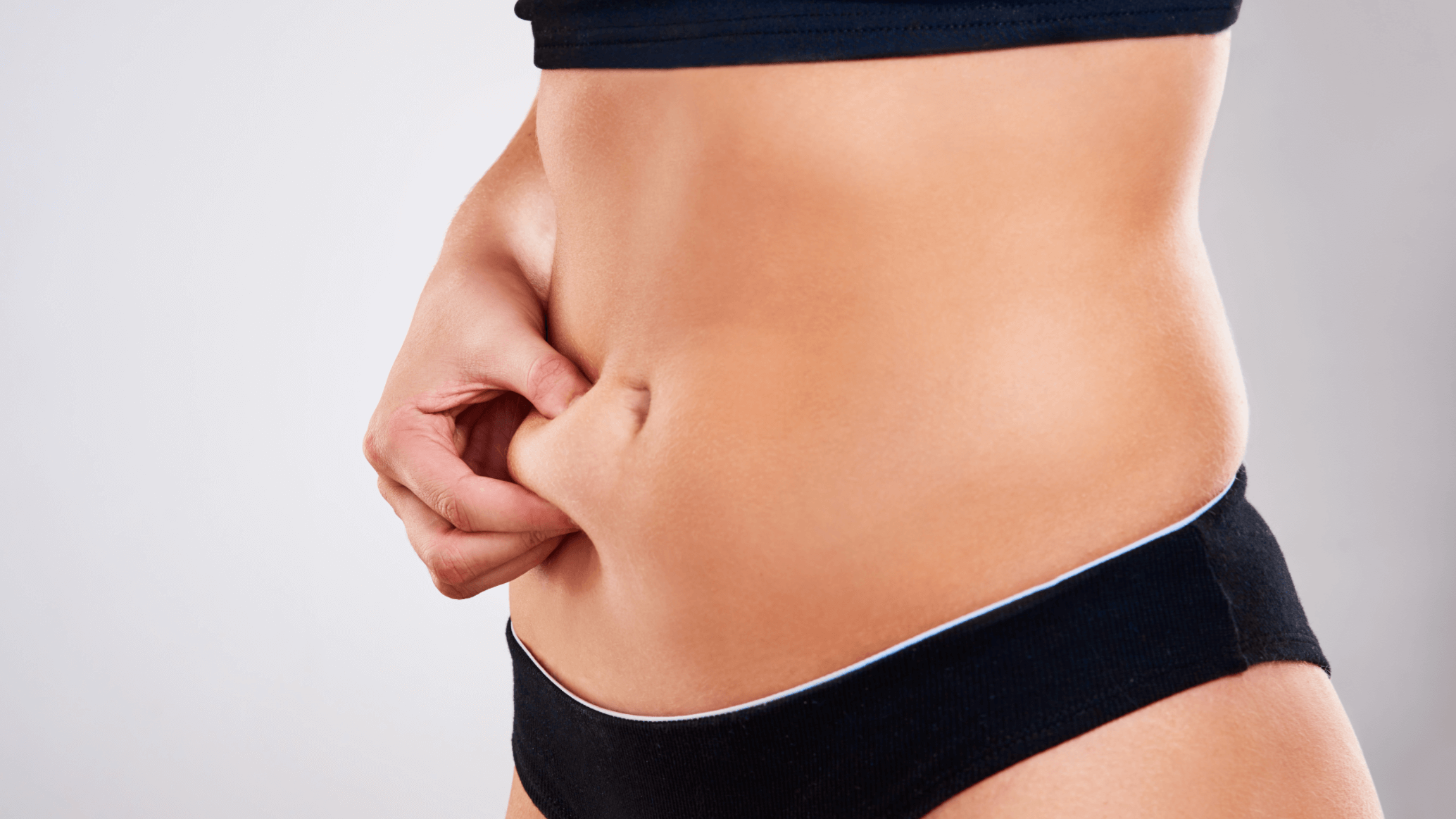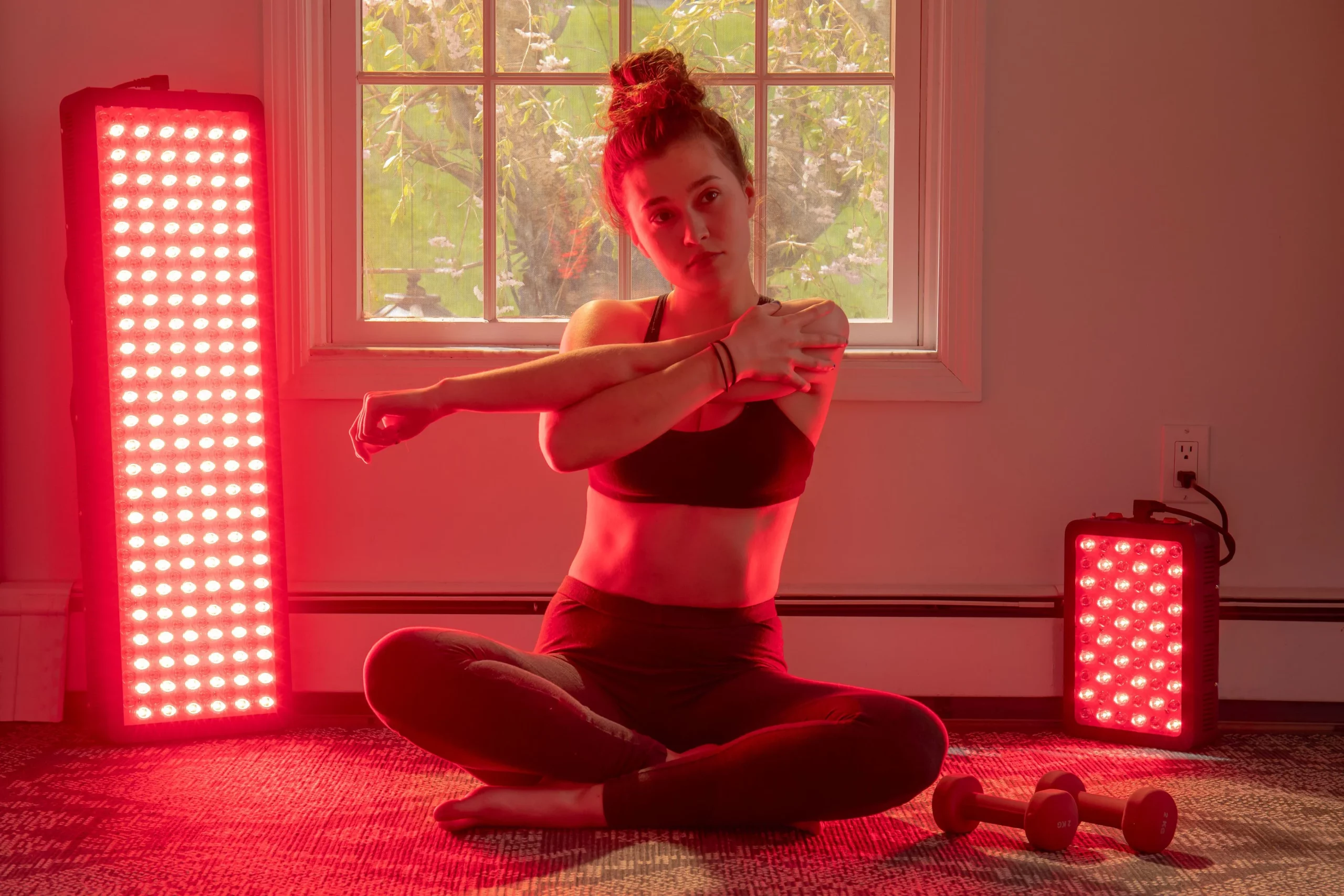Women face many body changes in life. The effects may not be that pretty, whether they result from aging, pregnancy, sun exposure, or before and after weight loss.
You should love your body and accept all changes in life. However, you all know how heartbreaking it is to see a new wrinkle, pore, or crepey skin.
We may have a cure for skin issues and anti-aging. You need to practice a healthy lifestyle, eat healthier, and visit a red light therapy.
Loose skin after pregnancy can be a challenging goal, but does red light therapy tighten skin? Is it beneficial for various skin issues? Many studies and dermatologists use red light therapy to possibly transform your skin and rejuvenate your appearance.
Let’s find out more!

What Causes Loose Skin?
A woman’s body is exposed to many hormonal changes during life. We can explain the main causes of loose skin and try to guide you on fixing the issue.
Drastic weight loss
Losing weight is excellent. Some people are motivated, have a strong will to lose excess weight and work for a confident body appearance. However, losing too much weight can make other changes to the body, like leaving some loose skin on specific body areas.
The fat keeps placed under the skin and keeps it stretched. In some cases, being overweight may cause stretch marks because the skin is not that elastic to keep the fat. In reverse, losing fat leaves the skin empty below, which can be surprising for the skin.
Pregnancy
The belly stretches much during pregnancy since it has to fit a baby inside. The body has not been in that state before. In this case, you should not be surprised if your belly is not tight and flat like before. The body changes, and the skin can not return to its previous state overnight.
Being pregnant in younger years is easier for the skin to regenerate and get back after pregnancy. Since the pregnancy age has changed its borders today, many women face difficulty dealing with loose skin around the belly.
Aging
With aging, collagen and elastin production in your body decreases. These two proteins are involved in skin tone and regeneration. The collagen keeps the tissues together like they are glued to each other.
On the other hand, elastin is the stretchy component that provides great tissue structure combined with collagen. These two proteins start decreasing very early, around the age of 25. That may not be visible initially, but it is good to consume collagen supplements in the late 20s.
UV light exposure
This may be a piece of bad news for people who love resting on a beach and working on their bronze tan. The sun produces UVA and UVB lights that may be dangerous for the skin if overexposed. In these cases, you should use sunscreen and lower the risk of skin damage.
UVA rays can cause loss of elastin and penetrate deep into the skin, damaging the collagen fibers. UV exposure is the main reason why our skin ages and sags.
Other conditions
Other conditions that make your skin loose are smoking and Ehlers-Danlos syndromes. Smoking causes many health diseases and increases wrinkles formation.
It also makes the skin thinner and sagging. The chemicals present in cigarettes break down elastin and collagen, causing faster skin aging.
The EDS are syndromes that make the skin stretchy but further than normal. This condition is caused by weakened collagen fibers and is usually genetic.

Does Red Light Therapy Tighten Skin?
Red light therapy may have a beneficial impact on skin and tissue regeneration. The rays may reach underneath the mitochondria and penetrate the tissues. Many dermatologists recommend red light therapy for individuals who face wrinkles and pores in their younger years.
Red light therapy uses LEDs that diffuse near-infrared wavelengths into the skin. The rays penetrate the skin and reach the cells in the entire body. The red light exposure may initiate a biochemical reaction in the body, allowing the mitochondrion to use more oxygen and produce ATP.
This process may boost energy production and allow the body to perform more efficient functions. Increased ATP (adenosine triphosphate) may improve blood flow and allow oxygen to reach more cells. Therefore, RLT may stimulate collagen production, which may tighten your skin.
How to Get Red Light Therapy
Spa center
Many spas and fitness centers have red light beds. The session may be pricey and range from $50 to $300 for a session of 20 minutes.
To get the best out of the therapy, you have to use it for over four weeks. The effects can vary depending on the issue you have and the consistency of usage.
At-home device
Since this therapy has become popular among people, some companies sell smaller red light therapy devices for skin that are suitable for home use.
You can purchase your own red light and make a spa at home. This way, you will be able to use the red light therapy often and for longer.
How to Maximize the Benefits
The device works perfectly for all skin types and may provide benefits for every part of the body. To increase the effects of red light therapy, you should take care of a few things.
- Clean your skin and ensure there is no makeup or sunscreen left.
- The red light device should be placed 6 to 12 inches from your body.
- The first sessions should be shorter and last from five to 10 minutes. Increase the therapy duration slowly and do not stay more than 20 minutes.
- The therapies should be made three to five times a week.
- Repeat the treatments until you reach the desired effects. After that, you should continue using the red light for maintenance.
- Utilize the therapy one or two times a week.
Conclusion
So, does red light therapy tighten skin? Using the red light device for a specific reason may expand the benefits since it can penetrate deeper into the skin and improve many body tissues’ functions. Do not be surprised if you see some unexpected results.
Red light therapy may also maintain better mental clarity, better sleep, improved mood, healthier hair, acne-free skin, etc.

Hello! I’m Nicky Rodgers.
Almost a decade ago, I got excited about the idea of employing alternative methods like red light therapy to create a healthier life.
To learn more about it, I did my Certified Light Therapist course from Photonic Therapy Institute and started looking into the intricacies of how light therapy influences several bodily processes. Before I knew it, my interest had become an obsession which resulted in this extensive blog.
Here, I offer countless well-researched articles to help you understand the benefits and uses of light therapy. I hope this information gives you a head start in your wellness journey.
